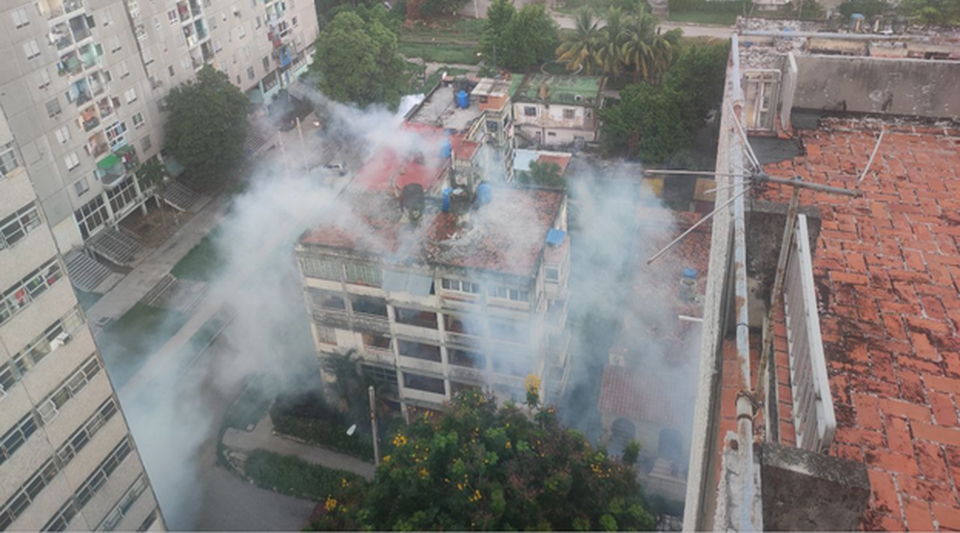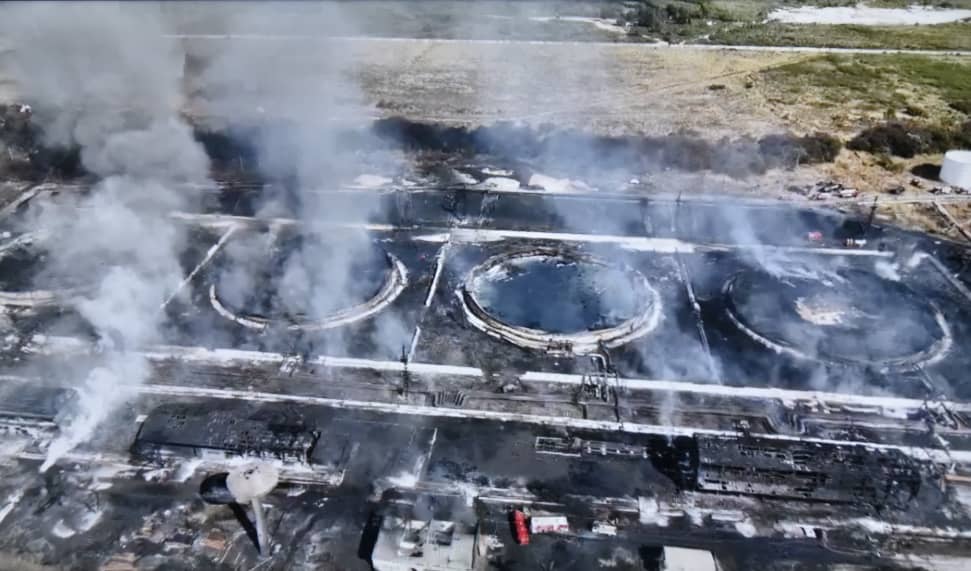Early this Thursday morning, the inhabitants of Nuevo Vedado, in Havana, woke up startled by the roar of what seemed like a small plane, flying over the streets of the city. However, when they went out onto the balconies, they noticed that the noise was not coming from a device on the heights, but from an old fumigation truck belonging to the Comunales company.
The vehicle dispensed its fumes on the streets, sidewalks and ditches, with the intention that the gas would reach the numerous mosquito hotspots that nest after the summer downpours. It is a random measure, but urgently decreed by the Government, which has always lacked a systematic and coherent strategy against Aedes aegypti.
Another Public Health measure has been the dispatch of medical personnel to inspect residential buildings in the area. But even when time and human resources are allocated for it, doctors must face the multiple daily setbacks of the Island.
A doctor who was going to inspect a building in the area entered the elevator to evaluate the upper floors and, between one level and another, she was trapped by a power outage. Had one of the building’s residents not come, already accustomed to “rescue” during blackouts, the woman would have remained there, locked in the elevator until two in the afternoon, when the electricity supply was scheduled to return.
Even when time and human resources are allocated for it, doctors and inspectors must face the multiple daily setbacks of the Island
Other neighbors have presented complaints to Public Health, since the toilets appear in the homes during the most inappropriate hours, when it is necessary to go to work or go outside, and they validate their presence as something “mandatory” and decreed by the Government.
As if that were not enough, the proliferation of hemorrhagic dengue and other mosquito-borne diseases are at their most critical point. The most recent report presented by the Minister of Public Health, he pointed out “holidays” and “rainy weather and intense heat” as causes, but concluded, with the usual rhetoric, that the only possible measure is “surveillance, timely admission, trained personnel, treatment adequate, and close ranks in the areas of greatest risk.
In contrast to the official optimism, the minister offered concrete data on the transmission of dengue in 11 provinces, 23 municipalities and 33 Health areas of the Island. During the last week of July, the incidence rate of dengue suspects has increased one 35.5% compared to the previous week, with an average of 68.3 cases registered per day, especially in Havana, Holguín, Isla de la Juventud, Guantánamo and Camagüey.
A report published in the newspaper Tribune of Havana reported that “intensive fumigation” vehicles similar to those in Nuevo Vedado will circulate in the municipality of Playa. The proliferation of arboviruses, which produces dengue, zika and chikungunya, especially affects the coastal area of Havana, where outbreaks abound.
According to Manuel Bravo Fleitas, director of Health in this municipality to the west of the city, there is a map that records the most affected blocks and the nuclei of dengue transmission, which includes the local polyclinic.
The most frequent practice in this and other municipalities on the island has been home admission and sporadic follow-up of patients. The symptoms that indicate the disease and that the neighbors must “report” to the Health directors are fever, muscle and eye pain, as well as fatigue and tiredness.
The proliferation of arboviruses especially affects the coastal area of Havana, where outbreaks abound.
“Playa shows a behavior similar to the rest of the Havana territories in terms of the number of cases and the number of fevers, with an average that ranges between 100-120 daily,” admits the report.
While the situation becomes more and more alarming, the Communal Services procedure continues to respond to a pattern of precariousness: workers water puddles, tanks and swimming pools with humble bottles of diluted insecticide; the fumigation devices, in addition to being old and very annoying, usually do not have the necessary maintenance and fuel; and the neighborhoods continue to suffer from unhealthiness and systematic deterioration.
Abandoned and collapsing buildings are ideal foci for mosquitoes to nest, in addition to numerous landfills and common areas that are barely cleaned of grass and garbage. The inability to ventilate houses adequately, due to frequent blackouts, sets the stage for nocturnal mosquito bites.
Added to this panorama is the fact that Cuba is far from having a satisfactory situation in controlling the covid-19 pandemic, in addition to the fact that hospitals have a more than worrying lack of medical supplies, essential for the treatment and recovery of these illnesses.
________________________
Collaborate with our work:
The team of 14ymedio is committed to doing serious journalism that reflects the reality of deep Cuba. Thank you for joining us on this long road. We invite you to continue supporting us, but this time becoming a member of our journal. Together we can continue transforming journalism in Cuba.








